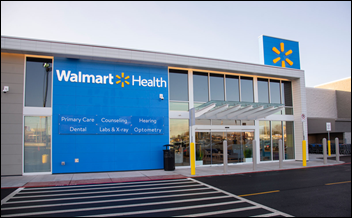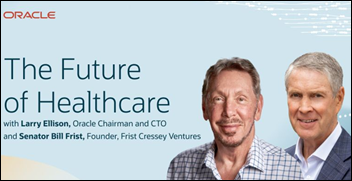Curbside Consult with Dr. Jayne 5/6/24
I volunteer as an instructor at an outdoor school every few months, but I ended up missing a full year of sessions due to schedule conflicts. This weekend, I was back at it. It was a welcome detour from my usual days of back-to-back conference calls and endless client-related fire drills.
There was a threat of rain for the weekend, but all of our participants were reminded of the need to be prepared for anything that nature might throw at them. Part of my responsibility for the weekend was monitoring the weather, and when you consider what can happen during spring in the Midwest, that can be its own challenge.
I usually keep my camping gear packed so that I can be ready for adventure at a moment’s notice, but I apparently moved some items from one backpack to another without replacing them. I ended up arriving without a headlamp and had to make use of my backup flashlight, which was truly terrible. Fortunately, the daylight hours are longer and I wasn’t called out of bed in the middle of the night for a medical emergency or a facilities crisis, so I was OK.
I’ll admit that I was also counting on the fact that if someone had to find me for an emergency in the middle of the night, they would likely have a better flashlight than my backup. It’s always nice when you’re surrounded by people that you trust and that you know will have your back if you need help.
I also forgot a key piece of my outdoor school wardrobe. I was pleasantly surprised that no one gave me grief about not having it. The people with whom I serve on staff know that I have my stuff together greater than 95% of the time, so maybe that had something to do with it. I’m grateful to be able to work with people who trust me and know that if I’m not running at my usual level of performance, there’s probably a good reason for it, and I’ll make up for it if I can.
I admit that I was running around crazy on Friday with some work in the morning that took longer than it needed to. I was dealing with a sex discrimination situation and needed to make sure it was escalated as far as I could take it before I left town, trusting that others would pick it up and continue to act on it in my absence.
It’s disheartening to know that this kind of thing continues to happen in 2024. This particular situation is particularly egregious, with various regional teams deliberately violating a nationwide company’s policy in their attempts to keep women from participating in certain activities, citing “safety” as the reason. The roots of this issue go back several years, and those of us who have been working for decades to have women included in technical or other typically male-oriented fields are simply tired of it.
I wasn’t about to stand by while women were bullied because they are new to the organization and others were afraid to advocate for them for fear of retaliation. That’s when it’s nice to be a consultant, because other than my own work, I have nothing to lose in this situation. Fortunately, the individuals who I escalated to were in agreement that what had been going on was inappropriate, so I doubt I’m going to get kicked off the project any time soon.
We’ve all been the new person on a team, and it can be difficult. It’s important that existing members of the team are willing to support new members and make sure that they are treated fairly. I’ve been on teams where leadership does more bullying than leading, and in those situations, it’s tempting to just keep your head down and try not to become a target yourself. Unfortunately, that approach sometimes emboldens the bully, and it certainly doesn’t help the situation go away.
If we look out for each other, it strengthens the team. Eventually we can arrive at that magical place where the team is fully tuned in to each other and can really start to achieve its goals. It’s not always easy to be an upstander, but as we’re working to build workplace culture, it’s a necessity.
I enjoyed working with my assigned teams this weekend, which included a hospital pharmacist, several paramedics, a chaplain, and more than a couple of IT folks. It was interesting to see people leave their typical roles and focus on new challenges, such as lighting cooking fires in the middle of a rainstorm and figuring out how to safely use axes, saws, and other things they aren’t exposed to in their daily lives. I think our students learned a lot about how they react to new situations, how they can better work with people who may not be like them, and how to “embrace the suck” when things don’t remotely go as planned.
As many times as I’ve done this, I even learned a thing or two. One such lesson was that I shouldn’t have bothered to bring my laptop, because despite the work that needed to be done, I wasn’t going to have time to even power it up. The small amount of free time that I did have was taken up by a delightful power nap under a gazebo while the students were with another instructor.
Another lesson was that even though I was executing a plan I had done dozens of times in the past, I probably needed to check my preparations more thoroughly than I did. One could argue that the corollary to that one is “never take anything out of your go-bag,” and I think I learned that one as well. Last, I was reminded of the fact that even in challenging situations, sometimes you just have to make an attempt to do your best and be OK with that.
I have the dates for the next two outdoor school sessions on my calendar, so barring any urgent work travel or family emergencies, I should be able to stay in the groove. My backpack is restocked and my headlamp has fresh batteries. I’m ready for whatever gets thrown at me next. In the mean time, I’ve learned how to make campfire cannoli with crescent rolls, a stick, and pudding – and let me tell you, when it’s 90% humidity and you’re tired and your feet hurt, one of those is a great pick-me-up.
What’s your favorite dessert for camping? Leave a comment or email me.

Email Dr. Jayne.








































"most people just go to Epic" that's a problem because then EPIC becomes a monopoly in healthcare, if it isn't…